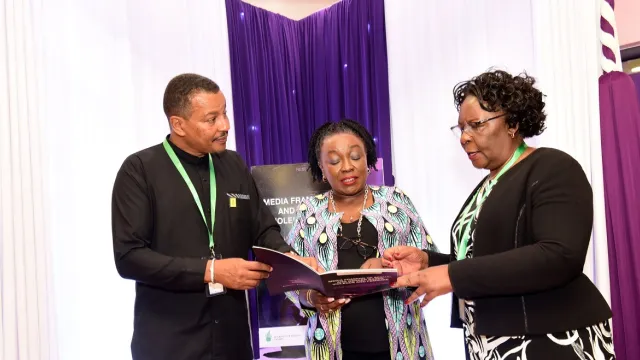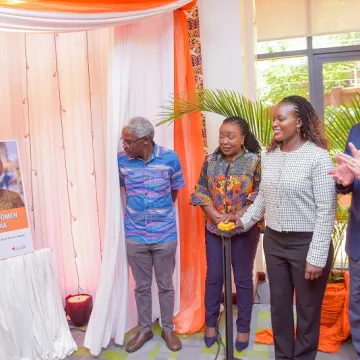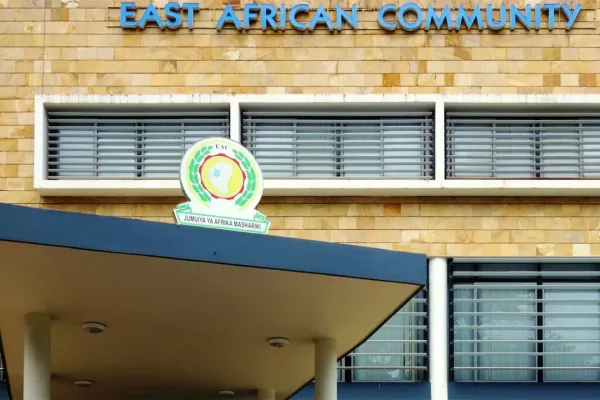Study exposes bias in media coverage of gender-based violence incidences

From left: Amnesty International Executive Director Irungu Houghton, Aga Khan University Dean Graduate School of Media and Communication, Prof Nancy Booker and Kenya Technical Working Group on GBV Chair Nancy Baraza during the launch of a report on the framing of femicide and sexual and gender-based violence (SGBV) by East African media, where Kenya recorded 54% of stories reported in EA within the 16-month study period.
A new survey has exposed a bias across media houses in the coverage of sexual or gender-based violence stories in Kenya, Uganda and Tanzania.
According to the “Media Framing of Sexual and Gender-Based Violence and Femicide in East Africa study by the Aga Khan University’s Graduate School of Media and Communications (GSMC), media across East Africa has failed to hold the perpetrators of these heinous crimes into account.
In a survey that examined 1,200 news stories published between January 2024 and April 2025, the survey shows that only three percent of stories focused on perpetrators. Across East Africa, government officials dominated as main actors (21 percent), followed by victims (20 per cent).
"Most follow-up stories retained victim-sympathetic frames (82 percent) and rarely focused on perpetrators (8 percent), leaving justice outcomes and institutional accountability underexplored. The limited attention to the fate of
perpetrators perpetuates public ignorance of consequences and weakens deterrence," the report notes in part.
“This study underscores the critical role of the media in shaping how societies understand and respond to gender-based violence,” said Professor Nancy Booker, Dean at GSMC.
She added: “It challenges journalists and editors to move beyond the headlines to tell stories that humanise survivors, question impunity, and hold systems accountable. Journalism has the power not just to inform, but to drive justice and change.”
The study further established that only 11 percent of stories published focused on amplifying the voices of survivors, despite these survivors being central to the narrative of violence.
Of the three countries surveyed, Kenya accounted for more than half of the regional coverage (54 percent), followed by Tanzania (28 percent) and Uganda (18 percent), suggesting a positive impact from the institutionalization of gender desks and targeted newsroom training.
Coverage across the region tended to spike around advocacy-driven events such as the 16 Days of Activism Against Gender-Based Violence, indicating that reporting remains event-driven and heavily influenced by advocacy cycles.
In Uganda, study shows that coverage experienced notable improvement this year, reflecting the outcomes of gender-
sensitive journalism training, while Tanzania’s fluctuating trends point to "structural and editorial differences in framing."
While the study noted positive progress, including a dominant trend towards situating violence within broader social and cultural contexts, the findings highlight a failure to connect incidents to accountability.
Lead researcher Dr Hesbon Hansen Owilla noted that this invisibility is a major barrier to progress. “There’s growing awareness in East African media that gender-based violence and femicide are societal issues rather than isolated incidents,” he noted.
“But coverage remains largely event-driven, and perpetrators are still invisible, especially in follow-up reporting. That invisibility fosters impunity and weakens deterrence.”
Study shows that Kenyan media coverage of sexual violence conted placed focus on the victims and government responses while Ugandan outlets focused on causes, community initiatives, and reform.
In Tanzania, media coverage highlighted perpetrators and criminal proceedings, a scenarion that the report notes suggests that while Kenya and Uganda increasingly embed SGBV within structural discourses, Tanzania’s coverage privileges the crime narrative over systemic critique.
"Collectively, these findings show that East African media are moving toward more thematic, reflective, and socially engaged coverage, yet still struggle to sustain intersectional analysis, perpetrator accountability, and advocacy-driven framing essential for transformative impact."
As part of recommendations, the study which is part of GSMC’s Advancing Gender Equality in Media and Civil Society in East Africa (AGEMC-EA) project, calls on media houses to establish gender desks, and embed gender-sensitive journalism in editorial practice.
What's more, the report calls for stroner collaborations between stakeholders especially the academia, policymakers, and civil society to better tackle gender based violence.
“The media is not just a mirror of society, it is an agent of change,” added Professor Booker. “This report is a wake-up call to reimagine how we tell stories about gender-based violence, and whose voices we choose to centre.”




